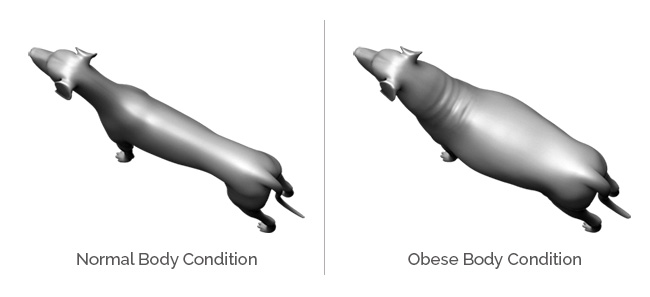How do you choose which weight you think you should aim for? Which range is considered healthy for your age and height? Many people are completely out of touch with what is considered a normal weight for them, and most overestimate what that answer is.
There are several measures for weight which are commonly used. In this post we compare BMI, waist measurement and the height to waist ratio.
Body Mass Index (BMI)
The BMI is a simple and reasonably reliable measure for body size – except in a few cases. It was invented in the 1940s, before the calculator became common, and therefore, had to be simple. It measures weight divided by height squared.
Since the 1970’s it has become the most common measure of weight worldwide. However, the weaknesses of this measurement means that millions of short people think they are thinner than they actually are, and millions of tall people think they are fatter than they should be.
If you are a particularly petite body size or a growing child, or if you are extremely muscular, as in a bodybuilding competition level or professional athlete, your BMI may class you as either underweight – or overweight. This may not be a true reflection of reality.
BMI is still, however, a useful measure for average height people, especially to compare with oneself. Taller or shorter people can simply keep the above fact in mind when using it.
- Normal BMI is 18.5 – 24.9
- Overweight is 25 – 29.9
- Obese is over 30, with 3 categories going upward
Women often feel their best with a BMI of 20 – 23, and men, 23 – 25.
You can find out your BMI <here>.
What if you have muscles?
BMI rises when you have muscles – a lot of muscles. If you play football or lift weights seriously at a gym, this may be you. A very muscular person may be healthy with a BMI over 25.
Here are some illustrations of the sort of person who has a high BMI but is extremely lean:


This higher BMI, despite leanness, comes at a cost. Studies of thousands of American linebackers (footballers) over several decades, who gain muscle weight to excel in their game position – show that many die up to 20 years younger than other footballers. Numerous older weight lifters have had heart bypass operations due to heart disease.
‘Big’ is not usually healthy, no matter how you get there. Lean and muscular is very healthy, but huge and muscular is not.
Enter waist measurement
A waist measurement is an excellent way to measure healthy weight. Fat gathering around the waist is a sign of fat around the organs which leads to metabolic syndrome. This is a clear marker for heart disease and Type 2 diabetes.
People are often surprised at how small a normal waist measurement is. It is
- under 80 cm for women, and
- under 94 cm for men.
Above these measurements mean you are at risk of chronic disease because of the inflammation caused by excessive fat around the body organs.
To lose just 1cm off your waist, you usually need to lose 1.1kg in weight (if you have under 25kg to lose).
If you have over 25kg to lose, 1cm off the waist takes closer to 1.5kg weight loss.
Waist to Height Ratio
While BMI and waist measurement provides a rough rule of thumb for normal weight, physiologists at Leeds Beckett University in the United Kingdom believe there is a better way to predict body and abdominal fat. That is determined by dividing your waist by your height.
Exercise physiology professor, Michelle Swainson, found the studies showed the cutoff for predicting whole body obesity was –
- 0.53 in men and
- 0.54 in women using this ratio. A ratio of
- 0.59 and above indicated abdominal obesity in both genders.
A meta-analysis of 57 similar studies showed that the risk of developing diabetes and cardiovascular disease begins to rise with a WHtR above 0.50. This also predicts more accurately life expectancy.
Keeping your waist to less than half your height is an easy way to measure the WHtR. You can also use this online calculator <here>.
The WHtR is also accurate with children over 5 years old.
Attitudes about obesity
These days, in the West, being overweight is actually “the norm”. We have become used to it – numbed to its dire consequences. However, two large studies have shown that weight gain of as little as 5kg from early adulthood through to middle age increases the risk of major chronic diseases, such as diabetes, cardiovascular disease, and cancer.
More than 66% of us in the West are classed as overweight, meaning our BMIs are over 25.
When people’s BMI’s drop below 25, at first others think they look great, but as it dips further towards 21, concern arises as to being too thin. Of course, this is actually nonsensical and false, but so inured are we to adults being overweight that ‘lean’ looks abnormal to many people. In other words, we can no longer go by our gut feeling as to whether we are fat, thin or in between. We need to measure it!
Even though the largest studies show maintaining a BMI between 18.5 and 25 leads to the longest life, the longer the studies go on – it is found that an even lower BMI is better. In fact, a BMI between 20 and 22 is most desirable and even lower is just fine.
A healthy, ‘normal’ BMI of 24.9 actually doubles the risk of heart disease when compared with a BMI of 18.5.
Can you be healthy while obese?
Today there is a movement that decries ‘fat shaming’ as discriminatory. Many “fat-activists” try to downplay the risks of obesity. They speak of “benign obesity” or “healthy obesity.”
The science shows, however, it is usually just a matter of time before the risk factors develop for cardiovascular disease, Type 2 diabetes, fatty liver disease or premature death.
What about menopausal women?
Most women find in peri-menopause – the 10 years or so leading up to menopause – weight starts creeping on a little faster, and efforts to get rid of it that worked well at 30 – just don’t work so well anymore. Once menopause arrives – this problem only escalates.
Many are told it is hormonal, it is natural, and most believe there is not a great deal that they can do except try one weight loss plan after another, with weight constantly rebounding. Eventually, most give in and try to accept themselves at a size larger than they actually feel comfortable in. And our society gives many ways to rationalise and normalise this unhealthy state.
Many women, however, do find what is causing the problem and successfully reverse it. Because there are very good reasons it happens – and equally good reasons that it can be turned around so that it is no longer a problem.
You can read more on how to tackle this problem <here> at my post dedicated to menopausal weight gain.
Fat kids
We have got too used to fat. Thousands of children in the USA classed as obese have been interviewed and asked if they thought they were overweight. The vast majority said “No, I’m quite normal” or “Maybe just a little bit overweight”. So used to overweight had they become, they no longer knew what normal was!
Fat dogs and cats
Even our dogs (and cats) are getting overweight and we’ve forgotten what ‘normal’ is.
Just as in humans, pets being overweight can also lead to painful joints, breathing problems, heart problems, immune problems and can exacerbate cancer. Giving our pets lives of pain and disability due to their size is largely our own fault.
It’s not right to treat our pets in this way since they can do nothing to help themselves.
Being underweight
If a person remains under 18.5 BMI for over six months, by choice, they are classed as underweight and possibly anorexic. Being 18.5 has never posed a health problem in itself and some people can hover even a little lower and still live healthy lives if they eat sufficient nutritious food.
Many models are underweight. Twiggy, one of the first international models of the 1960s, had a BMI of 15.5. This is definitely in a health risk category.
Long life = normal weight
In a study of more than 600 centenarians (those living over 100), only about 1% of the women, and not a single one of the men, were obese. This makes it fairly clear that making an effort to reach and maintain a normal weight is vital for living to enjoy seeing your grandchildren grow up to adulthood.
I hope these various measures of weight in this post will encourage you to get the help and support you need to reach your best weight if you are not there already.






0 Comments